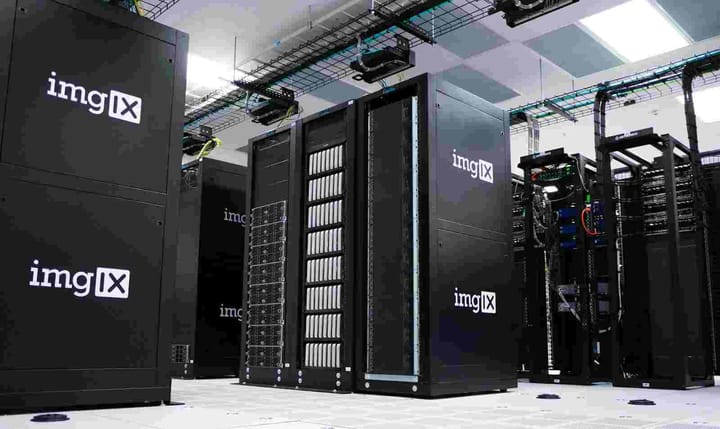Common Data Management Difficulties Financial Services Organizations Face
Financial services organizations face many challenges, no matter their size. One, in particular, is data management. The amount of data one organization generates daily is staggering. This article will answer the goals of the FIs and the challenges it faces in handling larger volumes of data.

While data management is something all organizations perform, banks and other financial institutions (FIs) face several unique challenges in this regard. Compared to other organizations, the stakes and consequences for improper data management are much higher for FIs due to the nature of their business. Moreover, they tend to handle larger volumes of data in comparison to other companies and institutions, thus compounding the effects of data management challenges.
Modern financial services risk management solutions have mitigated many of the risks faced by FIs. However, trends in big data are presenting novel challenges to FIs that require them to be proactive in maintaining their IT infrastructure. Below are some of these perennial data management issues currently being faced by financial institutions:
Data Insights Are Lacking
In the age of big data, information on market behaviors and movements can come from a wide variety of sources. Social media, smart appliances, wearables, and cameras are all being used to collect and store data on customers at every point of the customer journey.
However, these mountains of data need to be analyzed and understood before they could be used. And before any analysis could be done, the data has to be stored in a system-compatible format, labeled, and organized. Any data management system selected by a financial institution needs to be able to do all these and scale its performance as the FI accumulates more data.
System Performance Isn’t Scaling Adequately
Data management requirements in most institutions will constantly increase with time. Not only will more individuals enter the database, but they will likely have more data points associated with them. As a result, processing requirements tend to grow at an exponential rather than linear rate. When the system inevitably slows down in the medium or long term, reduced service levels may result. This can lead to negative UX issues for all FI stakeholders.
This means that organizations need to choose systems that will allow them to manage performance and processing power. Current database management solutions can dynamically change indexes to conserve processing power depending on the most common queries. This can allow high service levels to be maintained even as the data requirements increase.
Ever-Changing Data Management Standards
Many of the ethical concerns surrounding Big Data have complex and unsatisfying answers. Partly because of this, compliance regulations can vary dramatically between different jurisdictions. Additionally, the regulations themselves are constantly changing depending on the political and cultural situation.
Databases have to be able to keep up and comply with these different laws, standards, and regulations. FI’s systems should allow database managers to easily pull up entries that will be affected by any data compliance changes. Database management solutions that do not permit easy modifications to facilitate these changes can put FIs at risk of regulatory fines as well as legal action from affected individuals.
Not Enough Processing Power
While modern solutions for financial risk management have a lot of clever features to conserve computing resources, at the end of the day, FIs still need a good amount of raw processing power. Without enough processing power, the full potential of big data and automation for FIs will not be realized.
FIs should choose data management solutions that can scale up their processing power to meet their needs. Today, maintaining enough computing power is typically best accomplished through a quality cloud solution that’s maintained by a reputable provider. With such a setup, FIs are guaranteed a specified service level and can do away with the need to constantly upgrade and maintain onsite equipment.
Scalable Storage
Perhaps the biggest concern FIs have in data management is finding data storage solutions that are not only expandable but also allow for the quick retrieval of any piece of information. Additionally, the data should be easily transformable to whatever form an FI’s analysts need.
This challenge has largely been solved by cloud storage solutions. Enterprise-class cloud storage solutions have matured significantly in the past two decades and now offer better security, convenience, and scalability than most traditional onsite solutions, often at a much lower cost.
Suboptimal IT Solutions
Banks and other FIs may have broadly similar requirements, but they all face unique challenges, thanks to their differing goals and market contexts. As such, many operate in IT environments that are volatile or require a large degree of customization. Also, while many vendors are pushing for entirely cloud-based solutions, there are still many that require onsite systems or hybrid setups that compartmentalize their database functions.
Unfortunately, many IT departments rush the acquisition process for data management solutions, leaving FIs saddled with systems that prevent growth, mobility, or the maximization of data. This may ultimately hamper an FI’s growth and even affect customer experiences.
When selecting a database management solution, IT heads and other FI policymakers need to have a clear set of objectives and understand the issues that they want to be solved by the new system. FI policymakers should also be wary of scope creep and other issues that may result in a transition to a suboptimal database system.
When Should FIs Update Their IT Infrastructure?
The answer depends on the goals of the FIs and the specific challenges it faces. FIs that are not actively expanding into new markets may not have to update their database and financial services risk management systems as soon as those seeking aggressive growth.
Still, time marches on. The increase in data volumes and changes in data management standards is all but inevitable. Processing requirements will also consequently increase as will the needs of data analysts. For all FIs, even the latest data management solutions have to be seen as medium-term fixes for ever-evolving core issues.


